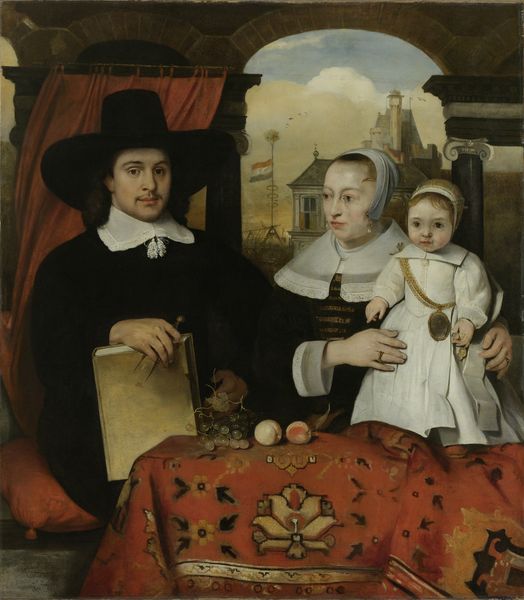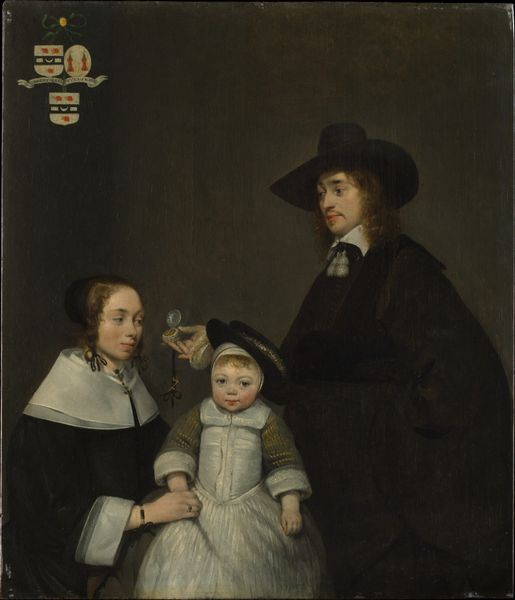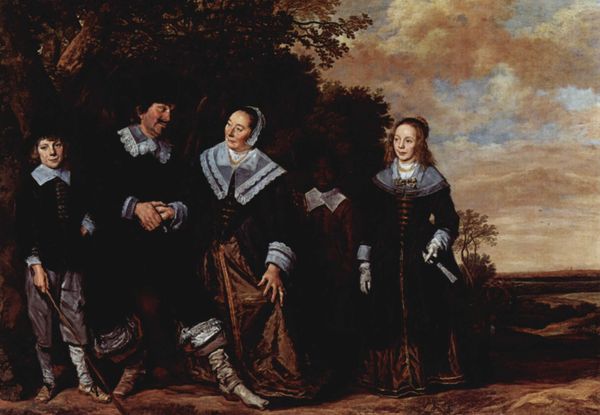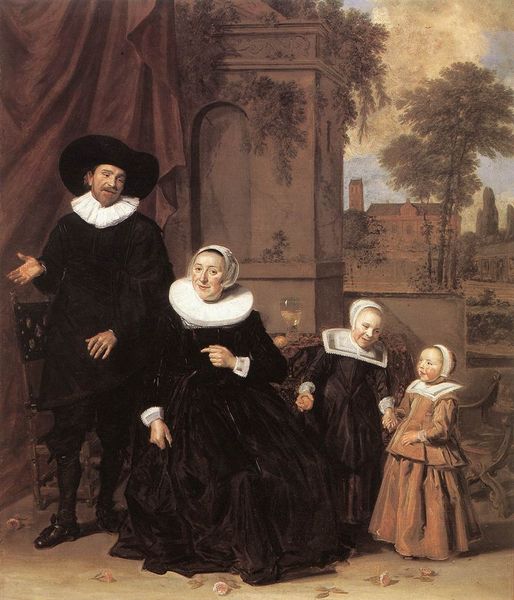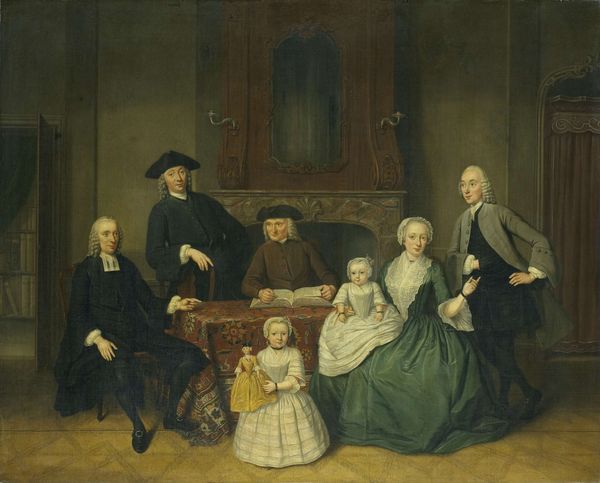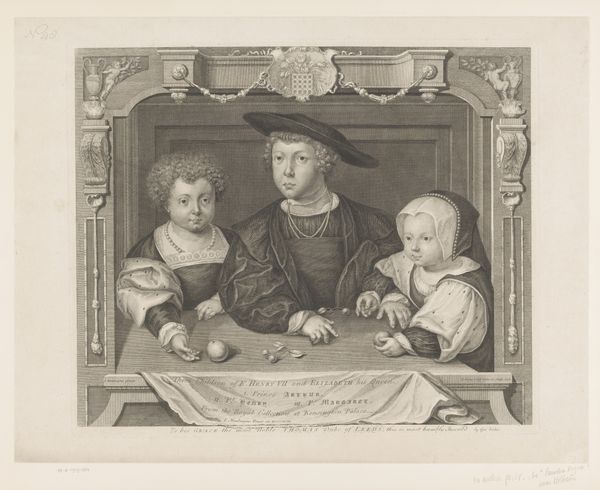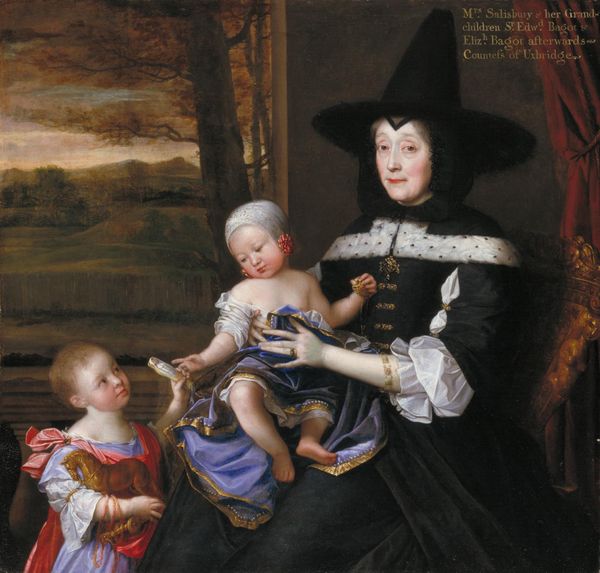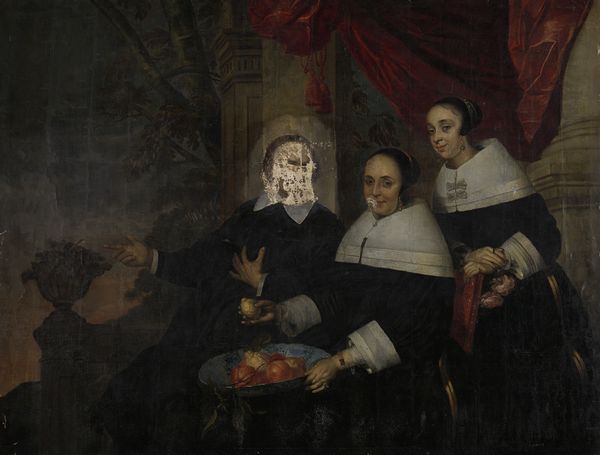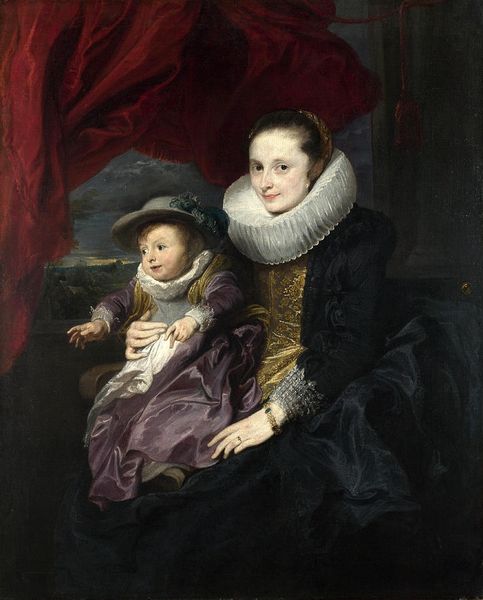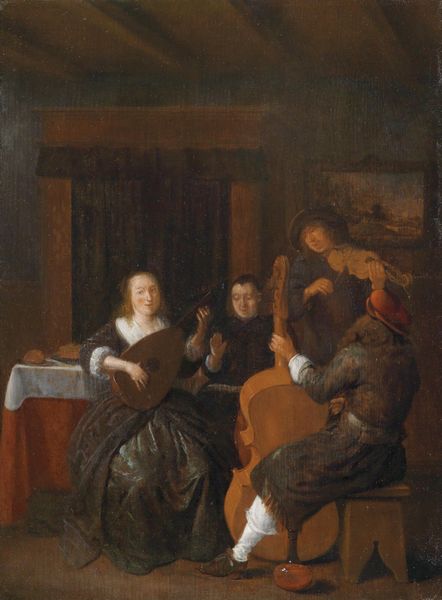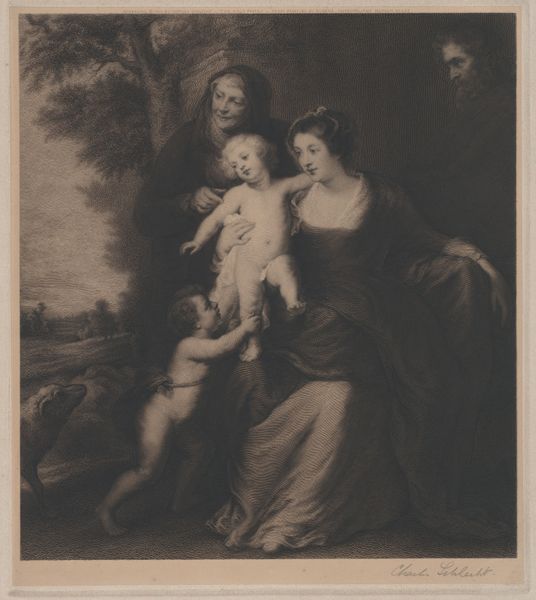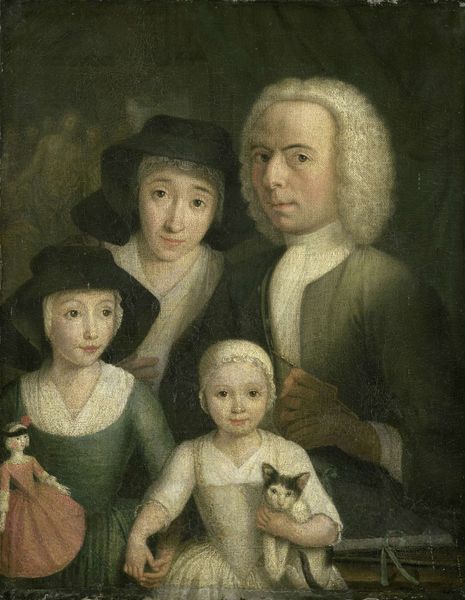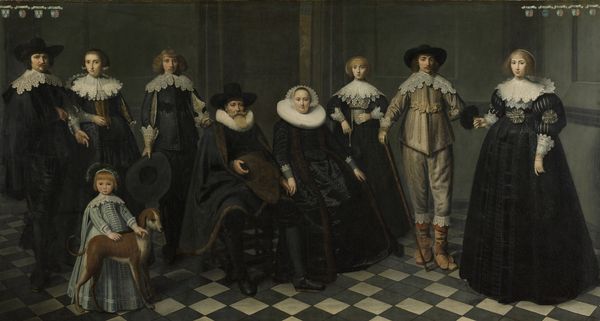
painting, oil-paint, canvas
#
portrait
#
baroque
#
painting
#
oil-paint
#
canvas
#
group-portraits
#
genre-painting
Dimensions: 136.5 cm (height) x 111.5 cm (width) (Netto)
Karel van Mander III painted "The Artist with his Family" using oil on canvas. Notice the formal arrangement of figures set against a draped backdrop. The artist, positioned to the left, stands slightly apart, while the two women are centrally located, their hands gently clasped over a book. The composition’s somber palette contributes to the reflective mood, offset by the detailed rendering of textures, from the sheen of the fabric to the subtle gradations of skin tones. This focus on materiality invites us to consider the function of portraiture at the time, not just as representation but as a display of social identity. The book becomes a signifier of learning and status, with the family's arrangement suggesting a narrative about lineage, knowledge, and familial bonds. Van Mander's painting exists within a cultural discourse where surface appearances are imbued with deeper meanings. The work serves as an exploration into how we construct and perceive identity through visual cues, inviting a continuous questioning of appearances and social constructs.
Comments
statensmuseumforkunst almost 2 years ago
⋮
This informal self-portrait shows the artist Karel van Mander with his family. His wife, Maria Fern, is shown with an open book, presumably the Bible, and lovingly clasping her mother’s hand. All three look toward the spectator with alert gazes. Family life was a favourite motif within Dutch and Flemish art in the 17th century. This makes the work typical of its day. The persons in the painting are depicted as distinctive individuals, full of life and character, and attention is focused on the figures’ emotional relationships with each other. Nothing in the painting points to van Mander’s profession as an artist, a fact that only serves to accentuate its focus on family life. Karel van Mander III (circa 1609-70) belongs to a Dutch family of painters. He arrived in Denmark in 1623 and finished his education here, after which he began working for Christian IV. Trips to the Netherlands and Italy made him familiar with the leading schools and movements of the time. Having returned to Denmark he became the favourite portrait painter amongst the royal household and the nobility. In van Mander they found an artist of international standing and calibre who knew how to successfully merge inspiration from Danish role models with the most recent impulses from abroad. Van Mander was part of the cultural elite in Copenhagen. He shared a number of interests with the great pioneer within Danish museum life, Ole Worm. Both men were collectors and owned considerable private collections that were open to interested parties. Van Mander was also interested in anatomy, and in the 1650s he worked together with the doctor Thomas Bartholin to create illustrations for a large volume on anatomy. A collection of drawings housed at the Royal Collection of Graphic Arts is believed to be preliminary studies for this work. His own time described him as more than just a painter; he was an honnête homme, i.e. a man well versed in the full spectrum of culture, learning, and refinement. Towards the end of his life van Mander was also associated with Frederik III’s kunstkammer in the capacity of inspector.
Join the conversation
Join millions of artists and users on Artera today and experience the ultimate creative platform.
